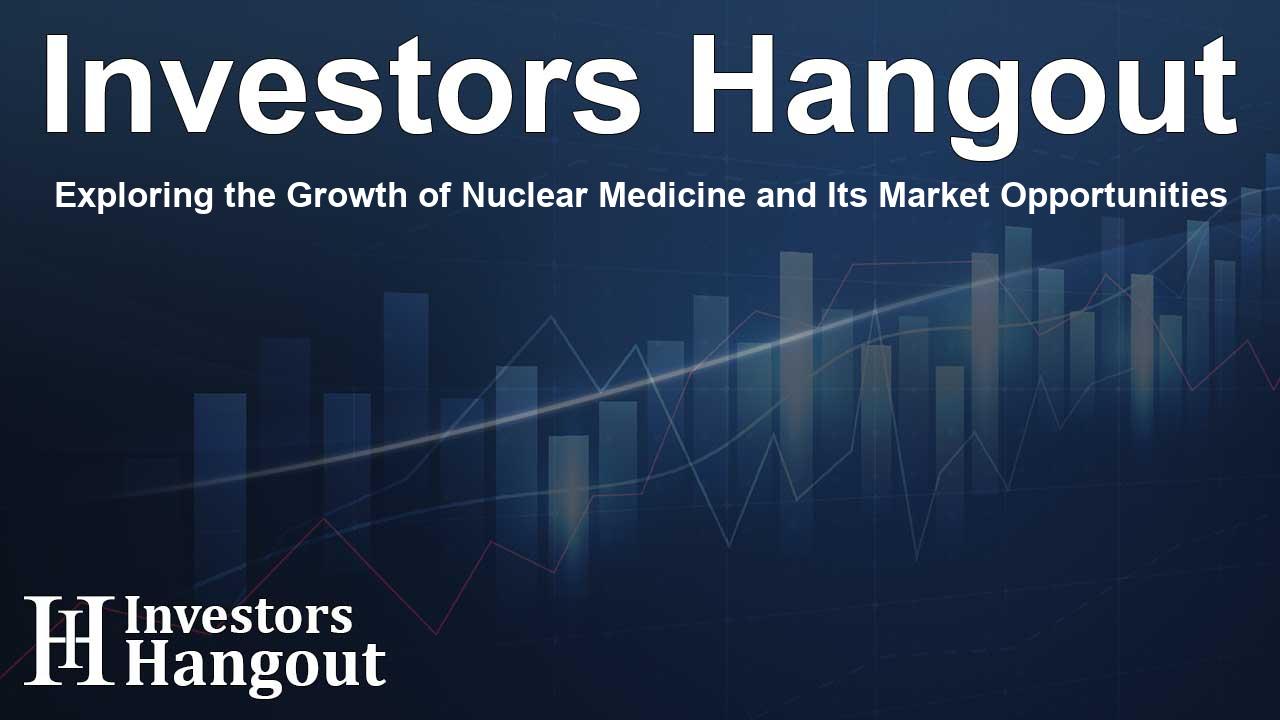Exploring the Growth of Nuclear Medicine and Its Market Opportunities

Nuclear Medicine Market Overview
The Nuclear Medicine Market is witnessing significant evolution, driven by innovative advancements in diagnostic imaging and therapeutic applications. According to recent analyses, this market is expected to grow rapidly, showing a Compound Annual Growth Rate (CAGR) of approximately 9.30% over the next several years. Valued at around USD 6.8 Billion, the market's revenue is projected to reach an impressive USD 12.99 Billion by the end of the forecast period.
Market Drivers Shaping Growth
Several key drivers are catalyzing growth in the Nuclear Medicine Market:
1. Increased Prevalence of Chronic Diseases
The rising incidences of chronic diseases, notably cancer and cardiovascular conditions, are significantly ramping up the demand for nuclear medicine. The precision offered by nuclear imaging not only aids in early detection but also allows for effective monitoring throughout the treatment process.
2. Technological Advancements in Diagnostic Imaging
The current transformation within the Nuclear Medicine Market can be attributed to rapid technological advancements. Innovations in diagnostic techniques have led to improved accuracy in disease detection, ultimately enhancing patient outcomes. Hybrid imaging systems, such as PET/CT and SPECT/CT, provide unparalleled precision and have gained traction in hospitals and clinics.
3. Adoption of Targeted Therapies
Another noteworthy trend is the growing acceptance of targeted radiopharmaceuticals, which represent a leap forward in therapeutic approaches. These treatments deliver direct, targeted intervention to affected areas, minimizing damage to surrounding healthy tissues and enhancing precision in oncology and other specialty areas.
Challenging Barriers to Market Expansion
Despite the promising growth, various challenges could inhibit the Nuclear Medicine Market's potential:
1. High Costs of Equipment
The financial aspects associated with nuclear medicine technology remain a significant hurdle. The initial investment for advanced diagnostic equipment, particularly for small healthcare providers, can pose a challenge in resource-limited settings.
2. Stringent Regulatory Frameworks
Regulatory agencies impose rigorous approval protocols that ensure safety but can slow the pace at which new treatments and technologies enter the market. Extensive clinical testing and safety evaluations can lengthen timelines and inflate costs, posing a barrier for manufacturers.
3. Limited Availability of Radioisotopes
The reliance on specific medical isotopes, which often have short half-lives, presents a logistical challenge. Any interruptions in the production of these essential components can impact the availability of services dependent on nuclear medicine, complicating operational efficiency.
Global Market Dynamics
The dynamics of the Nuclear Medicine Market vary greatly across different regions:
1. North America
North America currently leads the market, thanks to a robust healthcare infrastructure and significant investments into nuclear medicine research and development. The widespread use of PET and SPECT imaging technologies is a testament to the region's advancements.
2. Europe
Europe continues to further its production capabilities for medical isotopes and is poised for growth as it embraces new technologies in nuclear imaging.
3. Asia-Pacific
The Asia-Pacific region is emerging as one of the fastest-growing markets, driven by increased healthcare spending and larger patient populations affected by chronic diseases.
Key Players Influencing the Market
Leading companies in the Nuclear Medicine Market include Lantheus Medical Imaging, Inc., Cardinal Health, and GE Healthcare. Their commitment to research and innovation ensures a pipeline of advanced products designed to enhance diagnostic and therapeutic capabilities across healthcare systems.
Future Opportunities and Strategies
The future of the Nuclear Medicine Market looks promising, with opportunities for growth stemming from:
- Strategic collaborations between pharmaceutical developers and healthcare providers.
- Localized production initiatives that reduce reliance on imported isotopes, streamlining supply chains.
- Increased focus on research and development to innovate and expand product offerings.
Frequently Asked Questions
What is the expected growth rate of the Nuclear Medicine Market?
The market is projected to grow at a CAGR of approximately 9.30% over the next several years.
What are the main drivers for growth in the Nuclear Medicine Market?
The key drivers include the rise in chronic diseases, advancements in technology, and increased adoption of targeted therapies.
What challenges does the Nuclear Medicine Market face?
Challenges include high equipment costs, regulatory hurdles, and the limited availability of radioisotopes.
Which region dominates the Nuclear Medicine Market?
North America currently dominates the market due to its advanced healthcare infrastructure and investment in medical technologies.
Who are the key players in the Nuclear Medicine Market?
Key players include Lantheus Medical Imaging, Inc., Cardinal Health, and GE Healthcare, among others.
About The Author
Contact Owen Jenkins privately here. Or send an email with ATTN: Owen Jenkins as the subject to contact@investorshangout.com.
About Investors Hangout
Investors Hangout is a leading online stock forum for financial discussion and learning, offering a wide range of free tools and resources. It draws in traders of all levels, who exchange market knowledge, investigate trading tactics, and keep an eye on industry developments in real time. Featuring financial articles, stock message boards, quotes, charts, company profiles, and live news updates. Through cooperative learning and a wealth of informational resources, it helps users from novices creating their first portfolios to experts honing their techniques. Join Investors Hangout today: https://investorshangout.com/
The content of this article is based on factual, publicly available information and does not represent legal, financial, or investment advice. Investors Hangout does not offer financial advice, and the author is not a licensed financial advisor. Consult a qualified advisor before making any financial or investment decisions based on this article. This article should not be considered advice to purchase, sell, or hold any securities or other investments. If any of the material provided here is inaccurate, please contact us for corrections.
